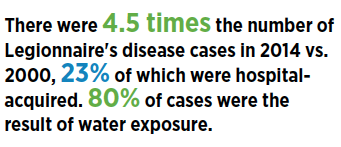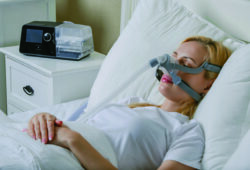A focus on water safety is key to infection prevention
You have hand sanitizers in every room. Isolation rooms for infectious patients. Head-to-toe gowns for staff. But did you know that one of the greatest potential threats of infection in your hospital could be flowing throughout your facility?

Michael Dodson knows. As the Director of Garratt Callahan’s Water Safety Group (HealthTrust contract #3968), he and his team are directly responsible for ensuring the water safety of hospitals throughout the country, many of which are HealthTrust members.
Dodson is fascinated by microbes and pathogens. But what really gets him excited about his job is the ability to directly affect patient care.
“Our field has transformed with an ability to keep waterborne pathogens from harming patients or staff,” he says. “This is critical, particularly for patients at high risk of infection, such as those with cancer, burns or recent transplants.”
Standards for safety
Dodson has seen the field shift in the past few years with the introduction of the ASHRAE (American Society of Heating, Refrigerating and Air-conditioning Engineers) standards in 2015. Before that, he says, “We just did what we knew was best at the time.” Now, the standards “put framework behind the requirements,” he explains. “Our vision and efforts across the country now come from this framework of understanding and what it takes to manage healthcare water systems from the inside out.”
The Centers for Medicare & Medicaid Services (CMS) also has requirements, updated in 2018. They require that healthcare facilities have water management plans in place.
Infections to be aware of
Of particular concern lately is Legionnaires disease, caused by the Legionella bacterium.

Having an effective water management program, the Centers for Disease Control and Prevention (CDC) notes, can prevent the majority of infections.
In 2017, ASHRAE released minimum Legionella risk-management requirements for water systems in all types of buildings. That same year, the CDC published a toolkit for facilities to reduce exposure
to Legionella, and CMS released its own advisory, requiring that facilities “develop and adhere to policies and procedures that inhibit microbial growth in building water systems that reduce the risk of growth and spread of Legionella and other opportunistic pathogens in water.”
Legionella infection is just one of many that can come from a contaminated water system. Others include Mycobacterium avium, Pseudomonas aeruginosa, Stenotrophomonas, Acinetobacter, Sphingomonas, Burkholderia and Achromobacter.
How suppliers help
The HealthTrust water safety suppliers provide a variety of services, including water quality and system performance assessment, laboratory analysis and Legionella risk minimization. They also offer several water treatment solutions, including reverse osmosis, chemical cleaning, bioaugmentation and cooling water treatment; secondary disinfection systems and sterile water quality systems; and water management programs.
- Garratt Callahan (contract #3968)
- Chem-Aqua, Inc. (contract #7104)
- Chem-Treat (contract #7271)
- Nalco (contract #3923)
Visit CatScan through the Member Portal to view contract package details or to find contact information for each of these suppliers.






